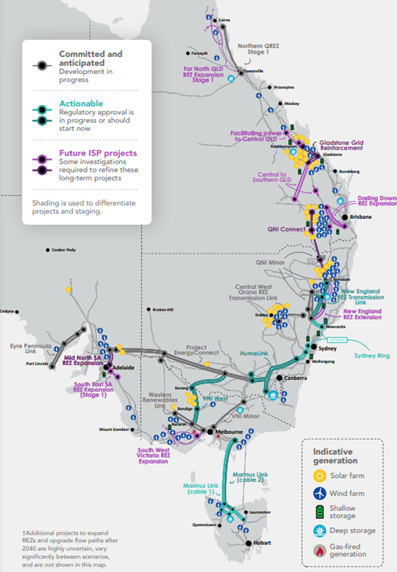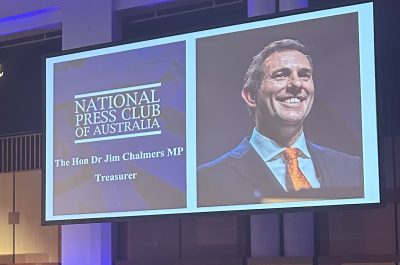State of Transmission
States going-it-alone
If you follow in the media what’s going on in energy (which given you are reading Energy Insider you probably do) it would appear state governments all seem to be building their own transmission frameworks. Well, you’d be right. Each state has its own framework for getting transmission built in its jurisdiction. As they get on with delivering projects, there are a few important things to keep an eye out for.
To understand how we got here, we need to go back in time.
Firstly we need to talk about the problems with the old national framework which will help us understand what the state frameworks have to do better
Secondly, it’s important to talk about Australia’s constitutional history to understand why state governments care about transmission development.
Then we will turn to the things to keep an eye out for as we develop new transmission frameworks.
The old national framework
In mid-2018 the energy industry collectively realised, with the release of AEMO’s first Integrated System Plan, that transmission was needed yesterday. The below image shows the huge amount of transmission infrastructure, including interconnectors, that needs to be built to reach our decarbonisation objectives. AEMO’s 2022 Integrated System Plan identifies an additional 10,000kms of transmission lines are needed to support 120 GW of large scale renewable energy and storage on the national interconnected energy system.

The focus on transmission delivery was subsequently dialed up. It soon became clear that the national framework just wasn’t up to the job. There were three main issues:
- It wasn’t designed to connect renewables – It could connect a big generator like a snowy 2.0 but it couldn’t handle that coordination task with adding lots of smaller generators.
- It wasn’t designed for scale – it didn’t have wriggle room or financial pressure valves to allow a bit more cash-flow here or to accommodate a higher risk there. You need these mechanisms if you’re going to put in 10,000 km of new transmission within a decade.
- It wasn’t designed for speed – projects were held up because the critical path was to go through all the regulatory approvals and then pick up the tools.
Project EnergyConnect was a real-time case study. It needed the Clean Energy Finance Corporation support to deal with issue (2) and it needed government underwriting to deal with issue (3).
Why state governments care
Given the pace of the transition the existing framework wasn’t going to deliver good outcomes for customers. The task ahead was, and still is, looking scary. So why is it state governments who seem to be leading the charge to deal with this?
To answer this, we need to go back to 1900 when the Australian Constitution was written. Back then:
- Sydney was four years away from electric streetlights
- Generators would shut down for Sundays
- The first high voltage transmission was 16 years away – for hydro in Tasmania.
We can’t really blame them. In a federation like Australia, the buck stops with the states – as does the political and social imperative to keep the lights on. While the National Electricity Market formally commenced in 1998, interconnecting five east coast market jurisdictions, the more recent imperative to decarbonise our energy system, different state emissions reduction targets and system needs has led to a more bespoke state-by-state approach.
Consequently, all jurisdictions are moving with some urgency to bring the energy transition within their control. They are each going about it in different ways because their starting points are different – different market and ownership structures and in Victoria, different planning and investment rules.
We often say of the transmission framework – both the physical system and the rules-based frameworks – that if you wanted to design what we need for the future you simply wouldn’t start where we are today.
Notes for state framework developers
While each state is building its own framework to deliver much-needed new transmission, there are a few common issues and challenges that are worth keeping in mind:
- Customers – there is only one reason we are on this journey. The challenge of managing the energy transition is a fine balance between environment, cost, and speed and it all comes back to the customer. There is a big difference between working for customers and working with them. Building that trust and social license requires transparency and genuine engagement. While transparency can sometimes meet its nemesis – confidentiality – it can pay significant dividends.
- Risk allocation is critical – in the good old days when everything moved slowly, transmission businesses could arrive at a number through a regulatory process and back-to-back that with a fixed price contract. It is not that simple anymore. Contractors should bear risks they can control, but they cannot control global supply chain costs and have limited ability to foresee all risks arising from greenfield projects. There are two options, to increase upfront prices or to share risks. How to solve this issue? See point (1)
- This is a repeat game – there will be some mistakes, but the transition is not happening overnight, so we get to learn together. It is the mindset of listening to, empathising, and partnering with your counterparties, whoever they are, that will get us through.
- Workforce constraints need addressing – We have the capacity across the country to deliver about 700 km of new transmission a year, which is not nearly enough. The silver lining is that we have an emerging talent pool in young apprentices, engineers and other skilled workers all keen to play their part in Australia’s energy transition. This is a once-in-a-lifetime transformation and we need to make this an attractive industry that looks after these future employees.
There are plenty more challenges to work through together and not all of them are known to us, given the rapid pace of the transition and the new technical and technological ground that is being broken. It is critical we continue to work together to share learnings and ensure the focus is always on the long-term interests of our customers.



